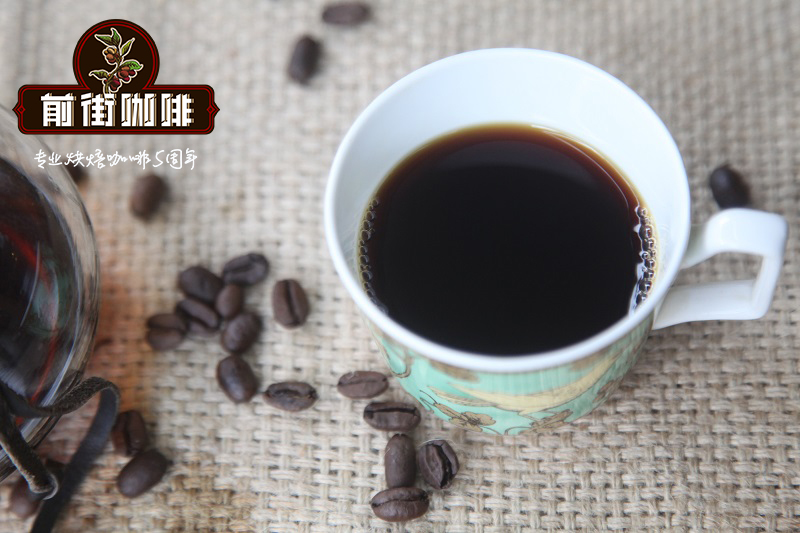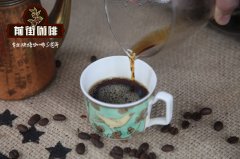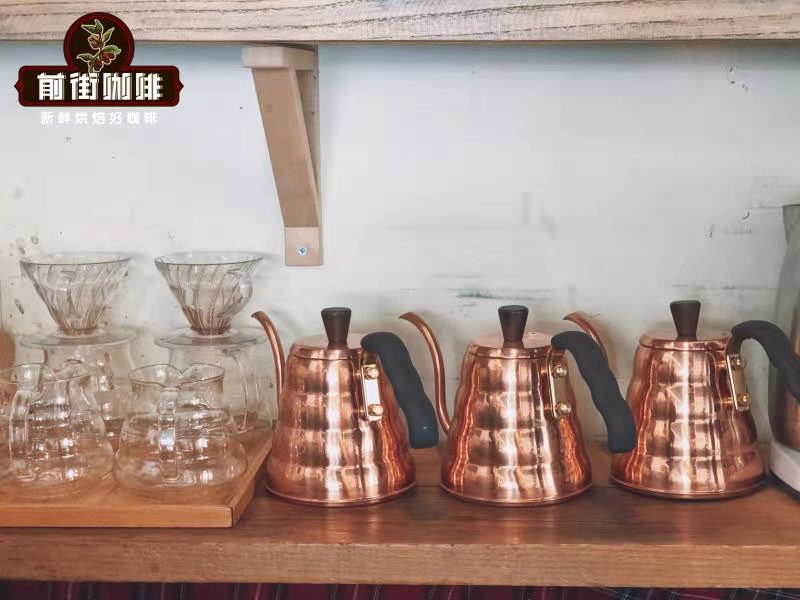High-end coffee-Arabica Arabica coffee beans _ Arabica coffee beans and what

Professional coffee knowledge exchange more coffee bean information please follow the coffee workshop (Wechat official account cafe_style)
Many coffee shops will advertise themselves with "100%Arabica". The price of coffee beans / powder cans will not be too low with this line. Is Arabica a high-end pronoun for coffee?
● Arabica is one of the most important coffee tree species in the world. Arabica coffee accounts for about 65% and 80% of the world's coffee beans, while the so-called 100% Arabica can only represent beans, and there is absolutely no good or bad quality color.
Coffee tree is a shrub or small tree of Rubiaceae. The ripe coffee fruit is bright red with sweet flesh and contains a pair of seeds, that is, coffee beans. When people refer to coffee, they usually refer to the fruit from a particular tree species-Arabica. Arabica is the main coffee bean in the world, growing in dozens of coffee-producing countries between the Tropic of Cancer and the Tropic of Cancer.
● knows Arabica coffee beans.
● 1. Arabica is a high-quality coffee widely used in commerce.
Arabica is a natural decaf coffee with about 1/2 to 1/3 of the caffeine content of Robusta. Arabica is grown in different high-altitude areas, and the taste of coffee beans varies greatly, so there are many flavors, each with its own characteristics. Blending coffee from different places is also a natural advantage of Arabica, making the coffee taste richer.
● 2. The high price of Arabica makes it difficult to grow.
Arabica's planting conditions are harsh, requiring higher elevations (600 to 2000 meters above sea level), fertile soil fertility, adequate moisture, proper sunshine and shade. In addition, Arabica coffee trees are less resistant to diseases and insect pests and are vulnerable to damage. So the annual output of coffee trees per unit area is also lower.
● 3. Blue Mountain Coffee is one of the earliest subvarieties of Arabica.
The three earliest subspecies in the Arabica series are Blue Mountain subspecies (varietal Blue Mountain), Tibica subspecies (varietal Typica) and Bourbon subspecies (varietal Bourbon). Blue Mountain Coffee followed Jamaica's unique advantage and became recognized as the best coffee in the world. However, it should be noted that 99.9% of the blue mountains that can be drunk in China are only grown near the blue mountains. Only coffee produced on 6000 hectares of land above 1600 meters above sea level can be called Blue Mountain, and the output is always below 900t. And most importantly, 90% of the world's Blue Mountain coffee is bought by the Japanese.
However, Arabica is not the only coffee tree species. More than 120 coffee species have been identified, but only one has a popularity similar to Arabica: Coffea canephora (commonly known as medium-grain coffee), which we often call Robusta.
● knows Robusta.
● 1. It is not difficult to plant Robusta.
Robusta, to put it bluntly, is a brand term that promotes the characteristics of its coffee tree species, which was first discovered in the Democratic Republic of the Congo at the end of the 19th century. Compared with the existing Arabica, Robusta can plant and bear fruit at lower elevations, adapt to high temperature environment, and has better disease resistance. Because the growing environment of Robusta is less stringent, the cost of producing Robusta coffee beans is much lower. But Robusta also has an inevitable drawback: the coffee is not very delicious.
● 2. Robusta is mainly used in the production of instant coffee.
Of course, there are different grades of Robusta, and it is possible to make high-quality robusta coffee. Robusta coffee has been an important component of espresso culture for many years, but in recent years most of the robusta coffee produced around the world has ended up in large commercial factories to make the most despised product in the industry: instant coffee.
● 3. Robusta is actually one of Arabica's parents.
The coffee industry has long regarded Robusta as an ugly sister of Arabica, and it was not until an interesting genetic discovery that scientists once made a genetic sequence alignment. It was found that the two tree species were not siblings or cousins at all. Robusta was actually one of Arabica's parents. The most likely birthplace of Arabica is southern Sudan, where Robusta cross-pollinated with another coffee tree, Yujenodes, to produce a brand new Arabica, which has since spread its branches and leaves. Ethiopia has long been regarded as the birthplace of coffee.
How does ● distinguish between Arabica and Robusta
● in terms of appearance:
Arabica coffee beans: the bean shape is small, the front is long oval, the middle crack is narrow and tortuous, and the arc on the back of the bean is flat, a bit like half a peanut.
Robusta coffee beans: the bean shape is larger, the front is gradually round, the middle side of the crack is a little inflated, the groove is very straight. The back is round and convex.
●, from a flavor point of view:
Arabica coffee beans have a varied and broad potential flavor. Arabica coffee produced in different regions, different elevations and different climates has its own characteristics and can show completely different individual flavor. It smells like grass when unbaked, and after proper baking, it shows "fruity" (medium-shallow baking) and "caramel flavor" (deep baking) suitable for single origin and a variety of mixed beans, which can be made using a variety of extraction techniques (French press kettle, drip extraction trickle filtration, espresso machines concentrator).
Robusta coffee beans are usually mundane, dull and pungent, and because the vast majority of robusta coffee beans in the world are planted in low altitude areas (at present, only high-altitude, high-quality, washed robusta coffee beans are rarely planted in India) different regions and different climates do not produce much flavor differences and lack of personality. When unbaked, it smells like raw peanuts, and the taste of cheap robusta coffee beans is usually between "wheat tea" (light baking) and "rubber tire flavor" (deep roasting). It is difficult to show a meticulous flavor.
● Arabica Coffee Bean Brand recommendation
Arabica coffee beans baked in front street coffee are fully guaranteed in terms of brand and quality. And more importantly, the performance-to-price ratio is extremely high, each pack of 227 grams, the price is only 70-90 yuan or so. According to the calculation of 15 grams of coffee beans per cup, a bag of coffee can make 15 cups of coffee, which costs only about 5 or 6 yuan per cup, which is recommended by conscience compared to the price of hundreds of cups sold in cafes.
Qianjie coffee: Guangzhou bakery, the store is small but a variety of beans, you can find a variety of unknown beans, but also provide online store services. Https://shop104210103.taobao.com
Important Notice :
前街咖啡 FrontStreet Coffee has moved to new addredd:
FrontStreet Coffee Address: 315,Donghua East Road,GuangZhou
Tel:020 38364473
- Prev

What is the grade of Arabica coffee beans? introduction to the flavor and taste of the main producing areas of Arabica coffee
Professional coffee knowledge exchange more coffee bean information please pay attention to the coffee workshop (Wechat official account cafe_style) Arabica coffee this name, at first familiar, seems to accompany with every coffee lover, but in the face of the subsequent classification and origin, people can not help but at a loss. If you like it,
- Next

Arabica Coffee Classification what kinds of Arabica coffee beans are there and how much is Arabica?
Professional coffee knowledge exchange more coffee bean information please pay attention to the coffee workshop (Wechat official account cafe_style) Arabica species account for 70% of all coffee production, is the most important commercial coffee beans. Arabica coffee beans were introduced into Europe from the Arab region and can be divided into Tibika species and bourbon subspecies according to their different places of introduction. In addition, through genetic mutation and heterozygosity
Related
- Beginners will see the "Coffee pull flower" guide!
- What is the difference between ice blog purified milk and ordinary milk coffee?
- Why is the Philippines the largest producer of crops in Liberia?
- For coffee extraction, should the fine powder be retained?
- How does extracted espresso fill pressed powder? How much strength does it take to press the powder?
- How to make jasmine cold extract coffee? Is the jasmine + latte good?
- Will this little toy really make the coffee taste better? How does Lily Drip affect coffee extraction?
- Will the action of slapping the filter cup also affect coffee extraction?
- What's the difference between powder-to-water ratio and powder-to-liquid ratio?
- What is the Ethiopian local species? What does it have to do with Heirloom native species?

